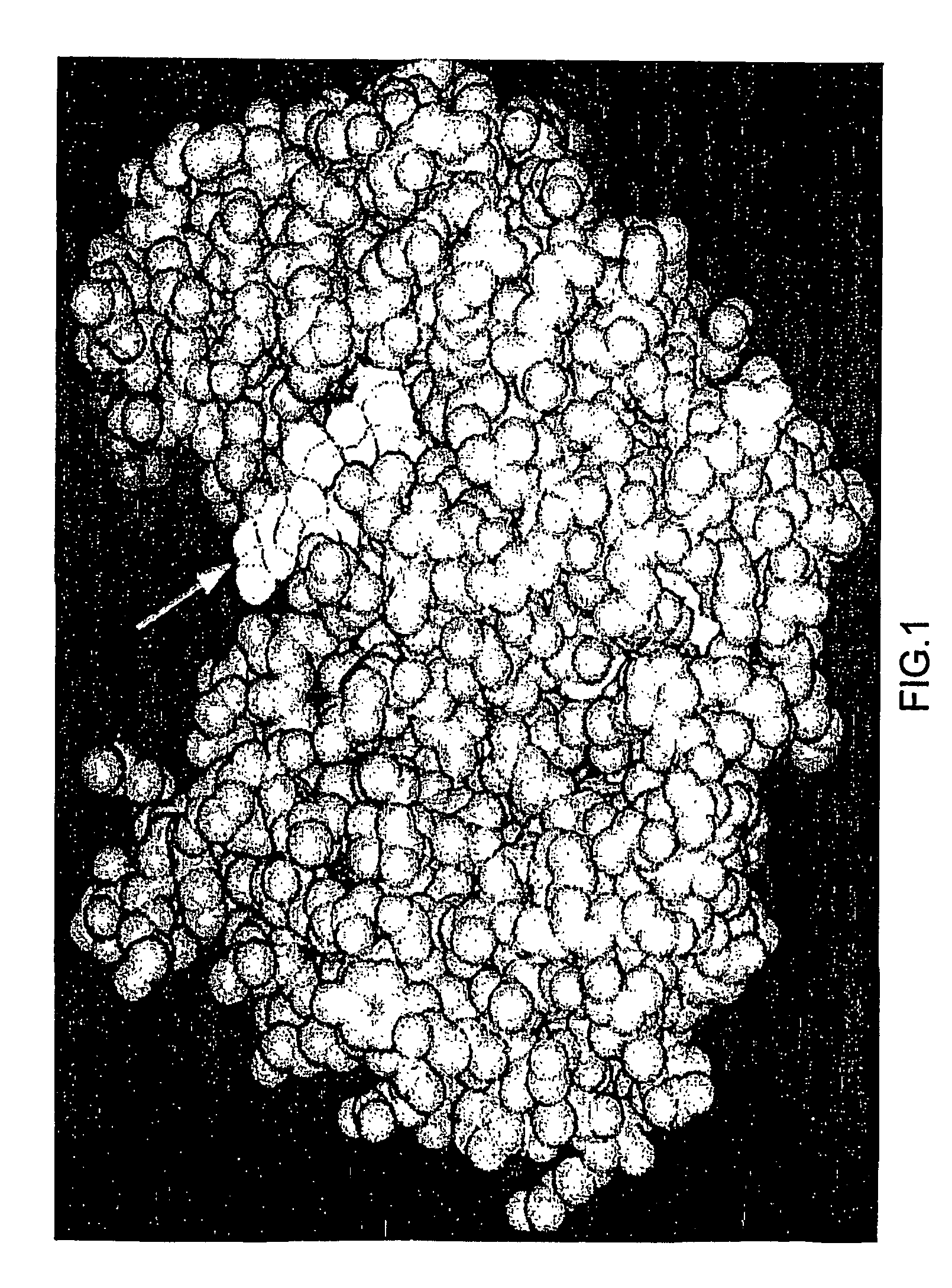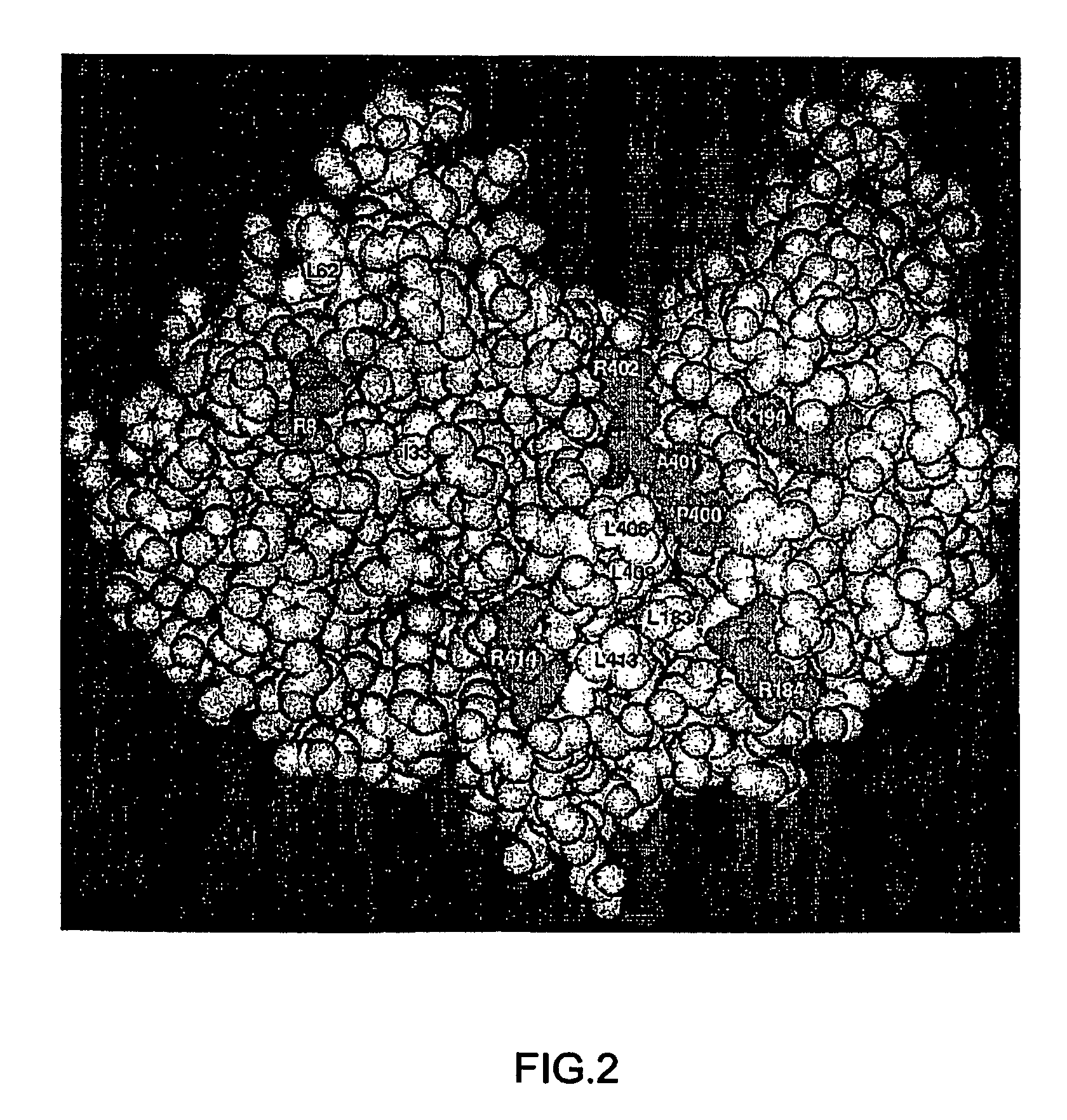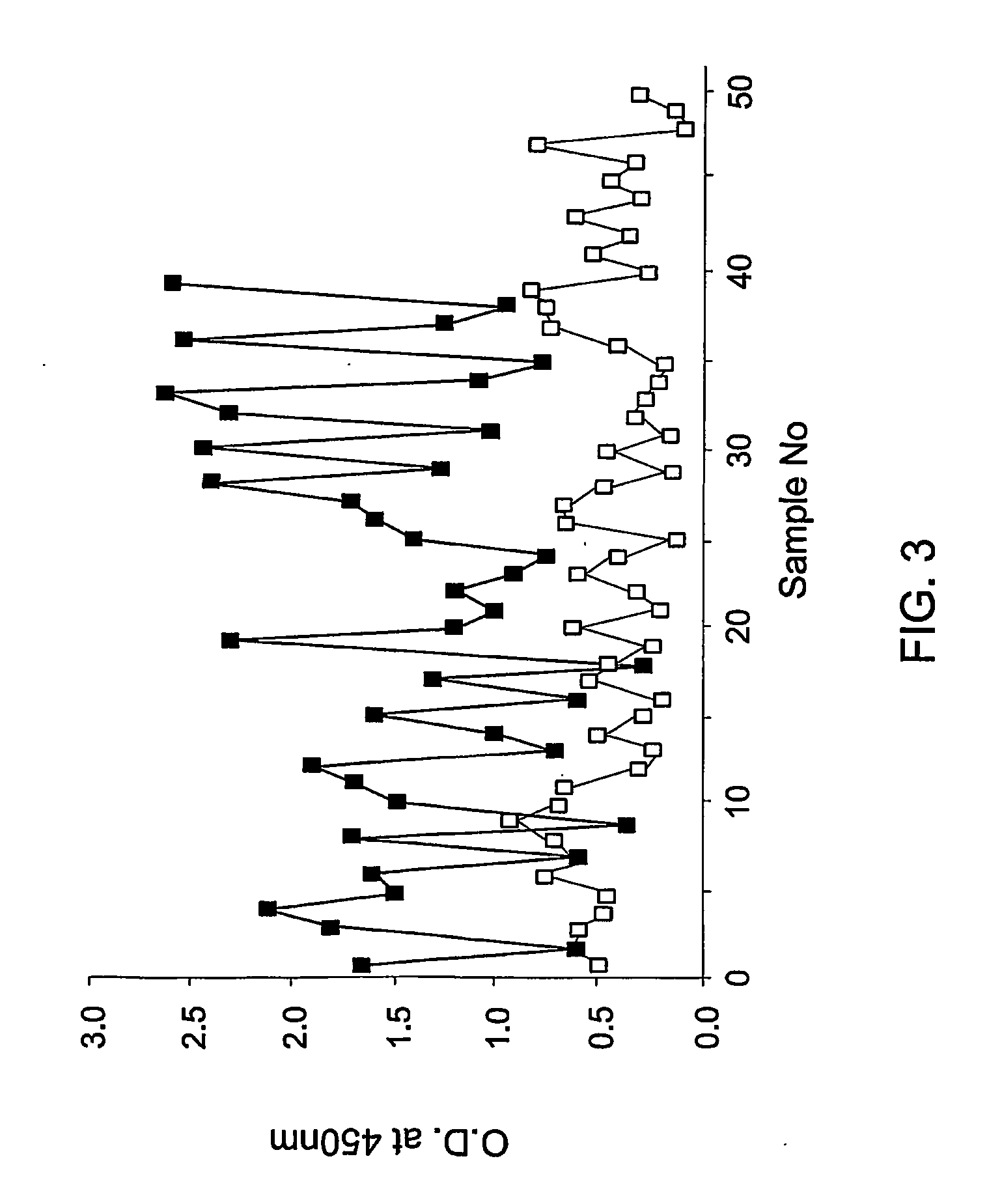Novel peptides for the diagnosis of schizophrenia
a peptide and peptide technology, applied in the field of peptide sources, antibodies medical ingredients, instruments, etc., can solve the problems of enormous economic and social burden on society, and cannot differentiate between plasma or blood samples of schizophrenic and non-schizophrenic individuals
- Summary
- Abstract
- Description
- Claims
- Application Information
AI Technical Summary
Benefits of technology
Problems solved by technology
Method used
Image
Examples
example 1
[0066] Four peptides in accordance with the invention, having one of the a.a. sequences:
(a)LVVGLCK(b)KLVVGLC(c)LVVGLMK(d)KLVVGLM
were biotin-labeled and coated onto streptavidine coated tubes as described above. A pool of plasma samples was prepared from 5 schizophrenic patients and an additional pool of plasma was prepared from 5 non-schizophrenic individuals.
Results:
[0067] All of the four peptides of the invention bound to the plasma pool originating from schizophrenic patients to a higher extent than their binding to the control plasma sample obtained from non-schizophrenic individuals (as measured in the enzyme immunoassay described above which showed 0.5 O.D. in the samples of the peptides with the control plasma samples and 1.6 O.D. in the samples of the peptides with the schizophrenia derived plasma pool).
example 2
Diagnosis of Schizophrenia Using the Peptide LVVGLCK
[0068] Of the four peptides of the invention, the highest purity of synthesis was found in the peptide LVVGLCK. In addition, these peptides were found to spontaneously form dimers, thus doubling the epitope for binding site of streptavidine.
[0069] Therefore, an experiment was carried out with the biotin-LVVGLCK as follows: the peptide was biotin-labeled and coated onto streptavidine coated tubes as explained above. Plasma samples of 39 schizophrenic patients and 50 control non schizophrenic individuals were tested with the coated peptide and the level of binding was determined by the enzyme immunoassay described above.
[0070] As seen in FIG. 3, the biotinylated peptide LVVGLCK bound to a higher extent to the plasma samples obtained from schizophrenic patients (filled squares) at a mean value and standard deviation of 1.47±0.65 as compared to its binding to plasma samples from non schizophrenic individuals (open squares) with mean...
example 3
Analysis of Schizophrenia on the Basis of the Peptide of the Invention as Compared to Acceptable Psychiatric Analysis
[0071] By further analysis of the results described in Example 2 above, with other recorded psychiatric parameters of the patients, an inverse correlation was found between the duration of schizophrenia and the level of binding to the peptide of the invention measured as optical density (O.D.). A geometric fit (y=axbx) was applied with a=1.9376 and b=0.000798 as coefficients (FIG. 4). Summarizing FIGS. 3 and 4, the following results shown in Table 1 below can be reached by comparing the biochemical test with the psychiatric evaluation.
TABLE 1Biochemical Test1-1516-301-30yearsyearsyearsPsychiatric EvaluationdiseasediseasediseaseControlsNo. of testedN = 39N = 23N = 16N = 39N = 50individualsSchizophrenic:39197260Borderline:01676Negative033644
[0072] This takes the following definitions into account: [0073] Negative: 0 until mean +1s [0074] Borderline: Between mean +1s ...
PUM
| Property | Measurement | Unit |
|---|---|---|
| hydrophobic | aaaaa | aaaaa |
| min-width | aaaaa | aaaaa |
| max-width | aaaaa | aaaaa |
Abstract
Description
Claims
Application Information
 Login to View More
Login to View More - R&D
- Intellectual Property
- Life Sciences
- Materials
- Tech Scout
- Unparalleled Data Quality
- Higher Quality Content
- 60% Fewer Hallucinations
Browse by: Latest US Patents, China's latest patents, Technical Efficacy Thesaurus, Application Domain, Technology Topic, Popular Technical Reports.
© 2025 PatSnap. All rights reserved.Legal|Privacy policy|Modern Slavery Act Transparency Statement|Sitemap|About US| Contact US: help@patsnap.com



